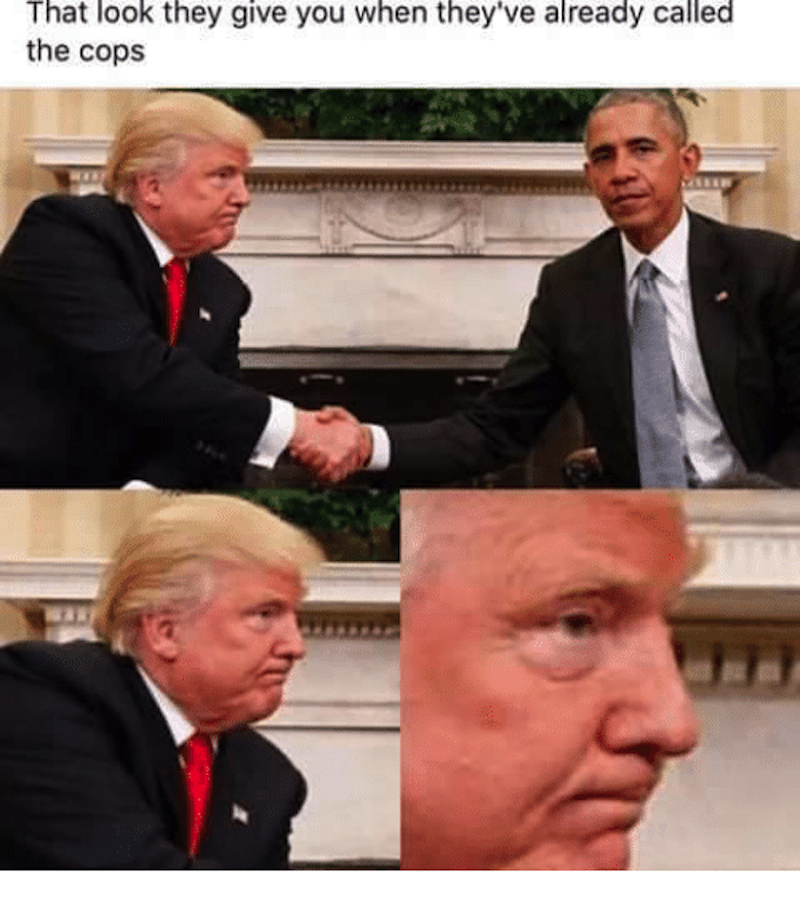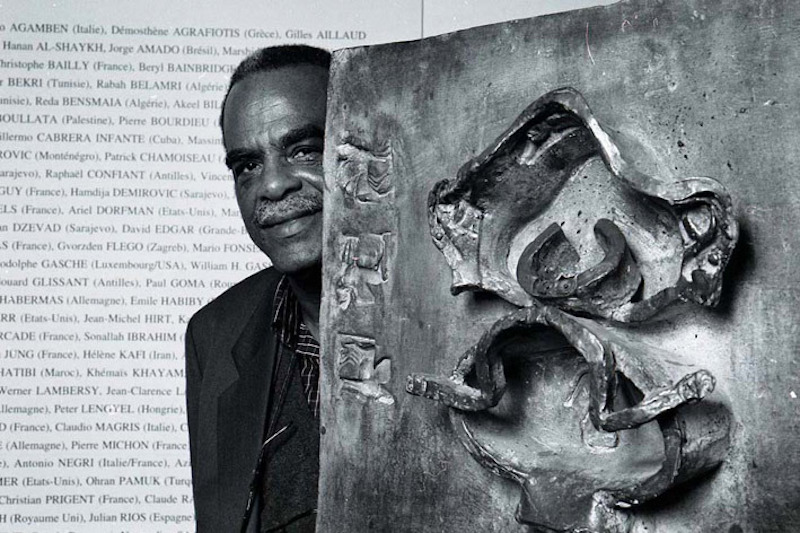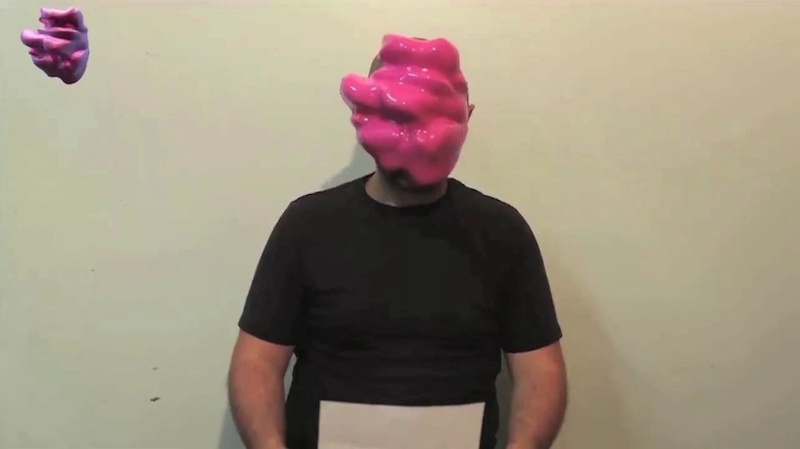Is the Face a Screen?
Is the Face a Screen?
“The first word of the face is the ‘Thou shalt not kill.’ It is an order. There is a commandment in the appearance of the face, as if a master spoke to me. However, at the same time, the face of the Other is destitute; it is the poor for whom I can do all and to whom I owe all And me, whoever I may be, but as a ‘first person,’ I am he who finds the resources to respond to the call.” 1 – Emmanuel Levinas
Emmanuel Levinas tells us that the face of the other, in its defenseless nudity, cries out: “Do not kill me.”2 The face “orders and ordains” us, “as if a master spoke” to us, framing an encounter between oneself and one’s duties to the other.3 For Levinas, the other’s face “accuses” us with its naked frailty—not with speech but with expression—and for this reason the encounter forms the basis of ethics: the face’s very exposure and weakness gives it power. Levinas claims that, at this site of encounter, the self must decide how to respond to the cry of the face, which punctures the vacuum-sealed world of personal desires and intentions to present itself as more real, as the hole of “signification without context,” which reveals the possibility of an outside to quotidian reality. “The face speaks,” Levinas says, as “it renders possible and begins all discourse.”4 But this speech is not linguistic; on the contrary, the face is a “nonlinguistic point of reference that also enables us to break the vicious circularity of the symbolic order.” This rupture provides our world “with the ultimate foundation, the ‘absolute authenticity.’”5
In developing his position, Levinas broke with his teacher Martin Heidegger and shifted the ground of philosophy from the self’s mortality (being-toward-death, Sein-zum-tode) to the call of the other. This contemplation regarded the other’s mortality in particular, embodied in the “defenseless nudity” of the face, which holds unspeakable power over the gazer, according to Levinas. In ineffable expressivity it calls out to us, commands us. But a cursory glance at the violence of history and the present calls Levinas’ formulation into question. If the face had the kind of power he claimed, then the settler, the slaver, the officer, and the speculator would have been “ordered and ordained” not to kill. This calls for a recalibration of the power Levinas finds in the other’s face.
If the face is indeed signification without context or meaning before language, then it has significant structural overlap with the hyperreality of commodities, which are empty signifiers unmoored from context, with place us in asymmetrical relations. It would be reductive to read Levinas’ use of “other” as pointing to “othered” people, but the reductiveness is instructive in light of this overlap: the face of the other is able to launch wars, and despite its plea for mercy it has not stopped the ongoing march of violence and exploitation. On the contrary, its thrall over the gazer seems to only go in one direction, toward violence and marketization. According to Slavoj Zizek, anchoring ethics to the other’s face as Levinas would have it is therefore “a priori impossible, since the limitation of our capacity to relate to Other’s faces is the mark of our very finitude.”6 Instead, for Žižek, the face of the other does the work of “cementing normativity.”7
Encounter with the bottomless other means accepting one’s own limitations and mortality. One’s own life is framed by the deaths of others, and by one’s relation to those deaths. To continue the proposed reductive reading of Levinas above, the cry of others’ faces is exactly what most Western people spend their lives trying to avoid confronting, hearts full of vague dread with the sense that, in whatever intangible way, we are responsible. For what? For everything, given the violence and wastefulness of so many modes of Western existence. And it is the not-knowing, the impossibility to articulate, that may cause the most pain, because “avoiding the other’s face” is ultimately as self-centered and necropolitical as white Western savior complexes are. In this way the West treats the other’s face (the “othered” face) as a kind of screen—a surface of mediation.
The encounter between self and other entails the presence of another, a mediating force like the State, which Levinas calls “the Third.” Žižek argues that “the limitation of our ethical relation of responsibility toward the Other’s face […] necessitates the rise of the Third (the domain of regulations).”8 Here we can begin to see the true treatment of the other’s face, and the reaction of the Western self to its wordless accusation and gesture toward one’s finitude. The other’s face is a kind of landscape of colonial shame, a screen the Western self uses to project the presence of the State—the settler, the slaver, the officer, the speculator—and simultaneously deny the existence of anything but the (Western) self.

What is this screenlike quality of face of the other? It is redolent of the Lumière effect, named after the legendary story in which the train depicted in the Lumière brothers’ 50-second film L’Arrivée d’un train en gare de La Ciotat (1895) caused audiences to jump out of their seats and stampede out of the theater in terror, so realistic did the train seem. Film scholar Martin Loiperdinger writes: “Such a tale of more or less drastically amplified panic assumes naïve viewers who had the wool pulled over their eyes and therefore succumbed to a filmic delusion of reality… the affective power ascribed to the medium [of cinema] is postulated to operate suggestively; that is, the medium is supposedly capable of deactivating spectator consciousness, inevitably drawing all under its spell.”9
The notion of mistaking representation for reality resonates with the way that, for the Western self, the face of the other implies and requires the third perspective (such as the State) to mediate, translate, and sublimate. And the resulting panic of this conflation allows one to consider how, for the West, the other’s face justifies the necessity of the State, as well indicating the West’s own always-already mediated, even imaginary status. The other’s face demands a suspension of disbelief in the Western mind, for it is like an event horizon in its accusation, revealing nothing regardless of the quality of the gaze.
Time after time, conquest after conquest, the West continues to see reality as secondary to imaginary, timeless, perfect forms, whatever shape these pseudo-concepts take. Confronted with reality’s violence, the Western mind turns to skepticism: disbelief un-suspended, theater lights turned back on, snacks eaten. I’m unsure if anything except me is real.10 The other appears as all variety of monsters and fantastical beings, and the West believes all manner of reaction is justified in the terrifying encounter justly described by Levinas. “I’ve already called the cops”—one takes the role of the State into one’s own hands.
And yet, the face of the other is sticky: afterimages remain, haunting the conceptual space that the Westerner thought had been cleared by State intervention. These traces have a Lacanian flair of a Big Other that structures or governs the anxieties and reactionary impulses of the Western subject. Thus the other’s face takes on the phantasmagoric properties of the commodity, to cite Benjamin.11 Its expressiveness is reduced to a platform for self-actualization.12 Žižek argues that the other’s face is the ultimate fetish, inscribing the terms of normativity for the Western mind.13 The very expressivity, the screen-like quality of the face, is the means by which the Western subject protects itself from the violence of reality, from the actual terror of that face, which reminds one of one’s complicity in the other’s pain.

The need for constant transparency and instant availability is another result of the West’s treatment of the other’s face as a screen. The State and its machinations are conduits for an on-demand narrative, a fantasy of total transformative access. The saving grace of the terrifying other’s face is the potential for translation, for reduction, and for the manufacturing of sellable templates. The other’s face is so often treated as a customizable template—even now, as I theorize the face, I am embodying this behavior. The reality of the other is concealed by the inherently mediated nature of the face and its cry. With its ostensible gestural universality and infinite difference, the prelinguistic accusation of the other is shot back toward the self’s gaze. The Western self, who has always already called the State, projects the self’s actions onto the face of the other, and sees in the expressions of the other’s face the justification for a return to normative violence. From this, then, we see the driving force behind contemporary art projects such as Zach Blas’ Facial Weaponization Suite, for which the artist and participants made “collective masks” in workshops that are modeled from the aggregated facial data of participants, resulting in amorphous masks that cannot be detected as human faces by biometric facial recognition technologies.
Blas’ masks are protective devices fashioned from data generated by the very systems of surveillance that generate the threat of the other’s face. Rather than allowing the military-industrial surveillance complex to flatten reality into its clusters of statistical aggregates, Blas’ work weaponizes these panoptic conditions. His masks speak to the constructed nature of the other’s face, how its properties are symptoms of a larger system and not essential to that other. Said another way, in the contemporary Western rubric the face of the other is virtual. Representation is mistaken for reality and a mediator is needed to resolve the mistake.
The politics of hope in Levinas’ claims —the hope that the face is enough to convince us not to kill—mirrors the suspension of disbelief of cinema, and also implies the ostensibly infinite customizability offered to users by the heavily templatic ecosystem of virtuality. Both involve a similar degree of projection premised on the phantasmagoric nature of the commodity, which, unmoored from context, appears as “more real” than the mundane world. The face of the other was like God for Levinas, or a godly trace, but gods in the West have mostly given way to movie stars, to the e-famous, to personal “spirituality.” Levinas did not see the ways in which the other’s face, as well as the othered face, are forced to play a role in mediation, to act as stand-ins for the State.14 For him, it was an unmediated surface, whereas in our time, we see the surface itself as the mediation.

However, Blas’ masks are still that: masks, meant for subterfuge. This is ultimately a reactionary gesture, which continues to be trapped in “a relation to the Other’s face,” due to which “we remain caught in the vicious cycle of ‘understanding,” since the mask only covers the face, and doesn’t offer a new way of looking.15 We can look to another framework—that of opacity—to challenge the essentialism at play and “perhaps, give up this old obsession with discovering what lies at the bottom of natures,” as Martiniquan theorist Edouard Glissant writes.16 Glissant argues that instead of projecting fungible conflations of representation and reality onto the face of the other, it is possible to respect its fathomless expression; the unknowability of the face can actually be generative, not terrifying. What Levinas calls an accusation on the part of the other is, to Glissant, in fact the presence of opacity, which forces the self to face its own limitations of knowledge and experience. For Glissant, self and other can exist in relation without the miasmatic screen of projection, the toxic white imaginary, if this opacity is respected—that is to say, not breached, reduced, commodified, or vilified. He writes:
How can one reconcile the hard line inherent in any politics and the questioning essential to any relation? Only by understanding that it is impossible to reduce anyone, no matter who, to a truth he would not have generated on his own. That is, within the opacity of his time and place. Plato’s city is for Plato, Hegel’s vision is for Hegel, the griot’s town is for the griot. Nothing prohibits our seeing them in confluence, without confusing them in some magma or reducing them to each other. This same opacity is also the force that drives every community: the thing that would bring us together forever and make us permanently distinctive […] We clamor for the right to opacity for everyone.17
Glissant’s opacity is not a masking, and is useful for this reason: the same demands for transparency from the Western powers-that-be can be challenged by a faceless, decentralized mass, a network of opacity which does not trade on the commodification of sociality and affect, the micromanagement of human time and contemplation. According to this ideal framework, we could respect each other on the basis of our mutual opacity, accepting the non-intelligibility of each to each. Acknowledging the “unknown unknowns” of the other, in this framework, would be the ultimate sign of respect, and the basis for a network of interactions that are not driven by entitlement to instant access or that require constant translation. Glissant’s articulation recasts transparency qua representation as a violent demand in the face of the complexities of world and other.

It is common to feel that there is no escaping the proliferation of marketized templates and flattened sensible categories. But in reality, the quality of being templatic is not inherently bad, and the assimilated nature of tools of resistance doesn’t necessarily decrease their impact. One may even argue that it is necessarily to circulate gestures against circulation; in the gaps in the network, silence and noise both give way to a slippage, a non-space of tension across the violence of metaphor. Through resistant strategies like a practice of opacity (respecting the unintelligibility or ineffability of the other), or more reactionary protective gestures like Blas’ masks, the West must come to an understanding of the ways in which its reactions to the other’s face are phantasmagoric projections so that it can begin weaning itself off the deaths of others and the commercial cycle that always follows the other’s death. Giving up the need for instant access is a first step, akin to accepting that we will never know what made Bas Jan Ader cry in I’m Too Sad to Tell You (1970-71), or rather, that we always knew—it was the audience itself that made him weep.
- 1. Emmanuel Levinas, Ethics and Infinity: Conversations with Philippe Nemo (Pittsburgh: Duquesne University Press, 1985).
- 2. Levinas, Totality and Infinity (Boston: Martinus Nijhoff Publishers, 1969).
- 3. Levinas, Ethics, 97.
- 4. Ibid.
- 5. Slavoj Žižek, The Neighbor (Chicago: University of Chicago Press, 2006), 5.
- 6. Ibid, 184.
- 7. Ibid, 5.
- 8. Ibid.
- 9. Martin Loiperdinger, “Lumière’s Arrival of the Train: Cinema's Founding Myth,” The Moving Image vol. 4.1, Spring 2004, 89–118.
- 10. The skeptical or solipsistic position—the crown jewel of genocidal Western thought—evidences properties of eternal return, since, as Alfred North Whitehead notes, Western philosophy is a footnote to Plato (Whitehead, Process and Reality, 1979, 39).
- 11. Margaret Cohen, “Walter Benjamin's Phantasmagoria,” New German Critique vol. 48 (1989): 87–107.
- 12. Gyorgy Markus, “Walter Benjamin or: the Commodity as Phantasmagoria,” New German Critique vol. 83, Duke University Press, 2001, 3–42.
- 13. For Žižek, “the human face ‘gentrifies’ the terrifying Thing that is the ultimate reality of our neighbour.” Žižek, “A Plea for Ethical Violence,” The Bible and Critical Theory 1:2, Monash University ePress, 2004, 5.
- 14. The instances of marginalized people being labeled “PC [political correctness] Police” are evidence of this.
- 15. Žižek, The Neighbor, 184.
- 16. Édouard Glissant, Poetics of Relation (Ann Arbor: University of Michigan Press, 1997 [1990]), 190.
- 17. Ibid, 194.


